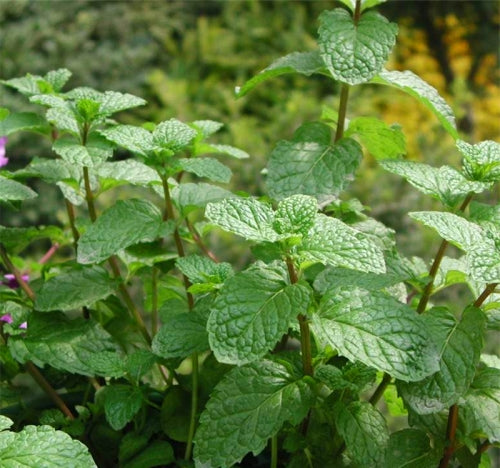
Healthy Mint, Happy Garden: Pest Prevention Tips
Share
Introduction
Mint, with its refreshing aroma and culinary versatility, is a popular herb grown in gardens and commercially. However, this fragrant friend can attract unwanted guests. Here's a breakdown of pest management practices for a thriving mint crop

Common Mint Pests Insects:
Aphids, flea beetles, cutworms, spider mites, and whiteflies are some common insect pests that can damage mint leaves and hinder growth.
Nematodes: Root-knot nematodes can attack the roots of mint plants, causing stunted growth and wilting.





IPM Strategies for Healthy Mint Site Selection:
Cultural Practices
Choose a location with welldrained soil and adequate sunlight. Mint thrives in moist conditions, but avoid waterlogging.
Proper Watering: Provide consistent moisture, especially during dry periods. Avoidoverwatering, which can promote fungal diseases.
Spacing: Plant mint with proper spacing to allow for good air circulation, which helps prevent fungal growth.
Pruning: Regular pruning encourages healthy growth and discourages pests from hiding within dense foliage.
Monitoring and Early Detection
Regularly inspect your mint plants for signs of pest damage, such as discolored leaves, chewed holes, or wilting. Early detection allows for timely intervention.
Beneficial Insects
Attract beneficial insects like ladybugs, lacewings, and minute pirate bugs by planting companion flowers with mint. These natural predators can help control aphid and other insect populations.

Consider introducing ladybugs or lacewings directly to your mint patch if pest populations are high.
Benefits of IPM for Mint
Healthy Mint Growth: Effective pest control promotes healthy mint plants with vibrant foliage and optimal growth.
Reduced Reliance on Chemicals: IPM minimizes dependence on chemical pesticides, creating a safer environment and protecting beneficial insects.

Sustainable Practices: This approach contributes to sustainable gardening practices and minimizes environmental impact.
conclusion
By implementing these IPM strategies, you can nurture a thriving mint crop, ensuring a steady supply of this delightful herb for culinary adventures.
Remember, prevention is key! By creating a healthy environment for your mint plants and monitoring them regularly, you can keep pests at bay and enjoy the refreshing benefits of mint for years to come.
